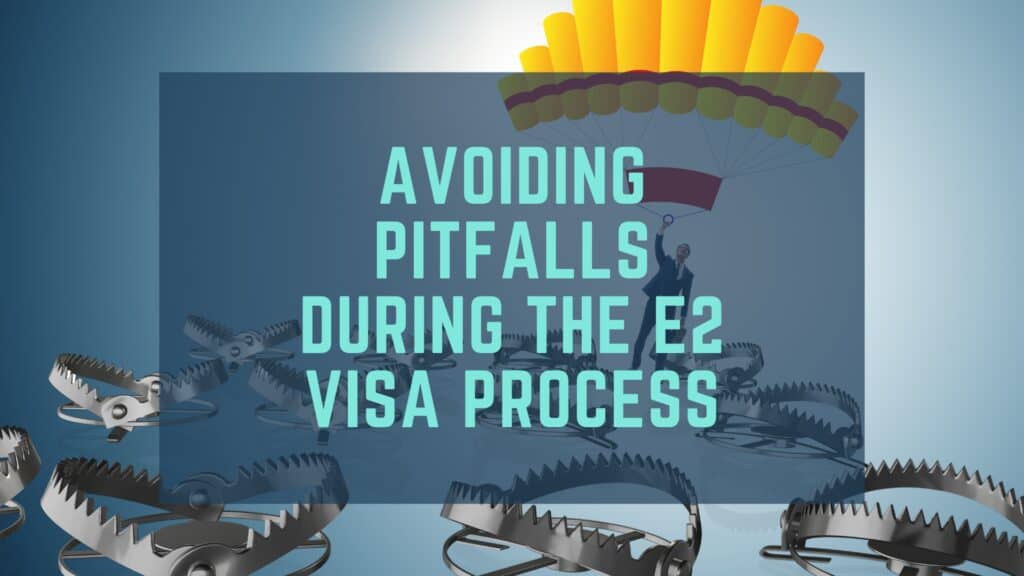Recently, I was hired by a gentleman who needed help with his E2 Visa application. He was overwhelmed by the idea of starting a business while simultaneously trying to navigate the complex visa process.
Over the course of several months we worked together to ensure that the E2 Visa process would go smoothly. As we started working on the case, I quickly realized that my client was an accomplished entrepreneur. He had a successful track record of starting and growing businesses. The business plan for his new business was clear and convincing. The local chamber of commerce was supporting his E2 Visa application because it was apparent that his business was going to create jobs. In short, my client had a strong case.
However, despite the strength of the case, I was anxious on the morning of the E2 Visa Interview in Toronto. I was ruminating on all of the possible ways in which the application could be denied. Was the investment big enough? Did he put enough money at risk? Will the consular officer agree that the business will create jobs?
In an attempt to create something useful from my anxiety, I drafted this post that discusses three issues that could lead to an unsuccessful E2 visa application.
What is the E2 Investor Visa?
Before we dive into the pitfalls that you can encounter during the application process, I want to provide a brief overview of the E2 Visa as it applies to individual investors. The E2 Visa enables those who qualify, to run a business in the US. As long as the business continues to meet the requirements, the E2 Visa can be renewed/extended indefinitely.
In order to qualify, you are required to prove to the US Government that you have made a substantial investment in a real, for profit business in the US.
Unfortunately a lot of E2 Visa applications fail because the US Government decides that the investment and the business do not meet the requirements. In the following sections, I discuss three of the most common pitfalls that can result in an E2 Visa Denial.
PITFALL #1: The Substantial Investment Requirement for the E2 Visa
There is no minimum required investment for the E2 Visa. This fact tends to create a false sense of security for E2 Visa Applicants. Unfortunately, no minimum does not mean no problems.
Oftentimes, the lack of a minimum required investment can create a basis for a denial because applicants do not have a clear target that they need to hit. Instead of showing that a specific amount was invested, you have to clearly demonstrate that you have invested sufficient capital to make the business succeed.
The amount needed to make a business succeed varies depending on the type of business that you are starting. Some businesses do not have high startup costs. Consulting companies and professional services fall under this category. Other businesses such as restaurants require a significant amount of money before they can open their doors and start serving customers.
Before you start the E2 Visa application process, you should carefully evaluate how much money you will need to invest in your business in order to make it a success(and employ others: see marginality section below). If you can hit that target number, then your investment should qualify as substantial.
PITFALL #2: The “At Risk” Requirement
Sadly, you will not succeed with your E2 Visa Application just because you have a substantial amount of money that you “plan” to spend on your great business idea. After deciding on the necessary investment amount, you need to put skin in the game by actually committing the money to the business.
The US government requires you to show that the investment in your business is subject to partial or total loss before they approve your E2 Visa application. It is not enough to show that you have a good business idea and access to capital. You have to start putting your plan into action and place your money “at risk.”
The “at risk” requirement is best demonstrated by considering an example of an investment that would not be considered “at risk.” Imagine the following hypothetical situation: A gentleman from Canada wants to start a painting business in the US. He wants to apply for an E2 Visa so that he can come to the US to run the business.
In order to prepare for his launch, he opens a US bank account and transfers his hard earned money into the account. The prospective business owner forms an entity for his company. He crafts a beautiful and thoughtful business plan showing his projected revenue and personnel forecast. All of the projections look good. The business idea is sound.
However, there is a big problem lurking beneath the surface. He has not purchased the truck that he needs. No money has been spent on advertising, office space, employees or equipment. If this gentleman changes his mind and decides that he does not want to pursue the business, he can just transfer the money back to his account without taking a large financial hit. The E2 “at risk” requirement is intended to avoid this type of scenario from arising. Without committing most or all of the necessary capital to start your business, your E2 Visa application will not succeed.
PITFALL #3: Your Business Cannot be “Marginal”
Ok, let’s assume that you have invested enough money to open your doors and start your business. Let’s also assume that your money is “at risk.” This is a good start, but you still have to clear the other E2 Visa hurdles.
One such hurdle involves convincing the US government that your business will not be a marginal enterprise. The marginality rule requires your business to provide employment opportunities for US workers in order to qualify for the E2 Visa. In other words, your business must go beyond providing support for you and your family.
In order to show that the business will not be marginal, it is critical to provide a personnel forecast in the business plan which specifies when and why the workers will be required. It is also a good practice to provide industry statistics that demonstrate the number of employees that are needed for the type of business that you will be running.
Conclusion
These three pitfalls were running through my mind as I worried about my client’s interview in Toronto. I was elated when I received the news that his E2 Visa request was approved. Hopefully this information helps you to understand part of the E2 process.
Avoid these pitfalls and you will increase your chances of having a smooth E2 Visa application process.
If you want to learn more about the E2 Visa, please feel free to check out the other E2 Visa information on my website or reach out to me directly at ben@frearlaw.com

